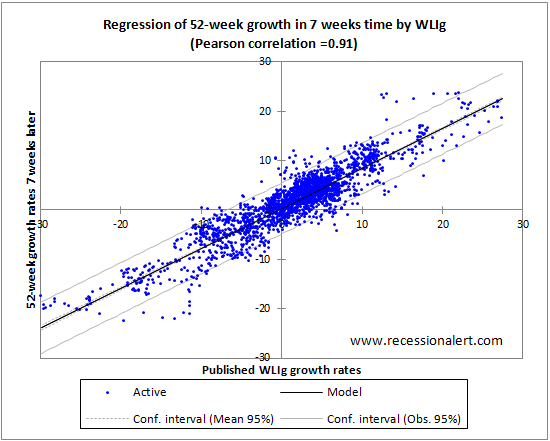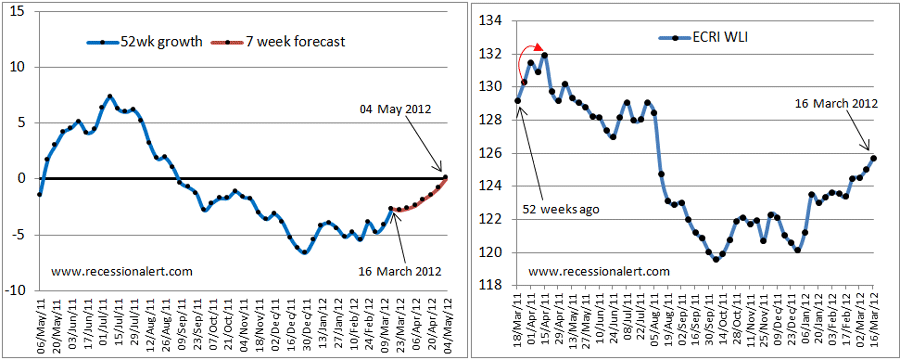More recently, ECRI has switched from the use of smoothed 6-month growth rates (as calculated by their WLIg growth metric) to annual (52-week) growth numbers of its Weekly Leading Index (WLI) to prop up a recession scenario. The reason cited is “…a widespread seasonal adjustment problem that economists have known about for some time.” Another native Capetonian, Prieur du Plessis, who regularly tracks the WLI has posted an excellent analysis of the rationale behind this descision that highlights some interesting subtleties between the smoothed growth rate and the annualised growth rate.
In a nutshell, Prieur concludes that even if the smoothed growth rate were to start falling, the 12-month growth rate will continue to rise as it “lags” the smoothed growth rate. This would in part seem to debunk ECRI’s statements that 12-month growth rates are foretelling a recession. To further illustrate Prieur’s analysis, we performed a correlation optimisation between WLIg growth figures and 52-week growth figures shifted back in time by x-months. We found the highest correlation of 0.916 when the 52-week growth was shifted back by 7 weeks (conversely the WLIg shifted forward by 7 weeks). The exercise was performed over the entire history of the WLI since 1967 and proves that statistically at least, the WLIg leads the 52-week growth rate by about 7 weeks.
This seems to corroborate Prieurs’ conclusions, but the more interesting aspect of this exercise is that we can use the correlations above to have the WLIg readings forecast the 52-month growth rates in 7 weeks time as we have done below. As you can see the forecast actually shows the 52-week growth likely to keep languishing for another 2-3 weekly readings before “catching up” with the WLIg, and surfacing above zero around 11 May 2012 (when the 04 May 2012 reading is made public.)
The reasons for this “languishing” are clear if you inspect the right chart. The 52-week growth for 16 March is based on the reading on extreme left of the chart. We still have to overcome the “hump” shown in red before it starts becoming much easier to post higher 52-week growth readings. After 20th April 2012 the 52-week growth reading should accelerate without the “headwinds” of the “hump.” The forecasted 52-week growth figure for the upcoming ECRI publication on 30th March 2012 (for the week ended 23rd march 2012) is -2.8%, slightly lower than the prior reading of -2.68.



Comments are closed.